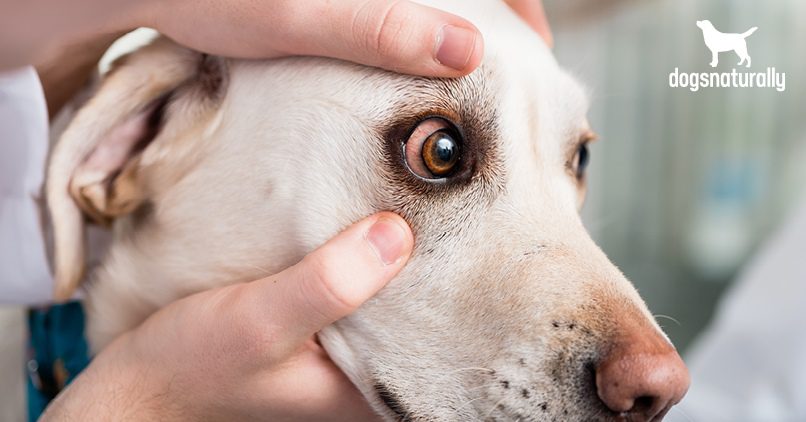
Red eyes in a dog: what does it mean and what could be the reasons
To find out why a dog has red eyes, it is best to visit a veterinarian. This symptom usually indicates a serious health problem. The sooner it is detected and treated, the better.
The most common causes of eye redness in dogs, the signs to look out for, and the treatments that a veterinarian can prescribe are later in the article.
Contents
Red eyes in a dog: causes
Have you noticed that your dog’s eyes seem to be bloodshot? Red eyes in a dog can be caused by a number of reasons. The most common of them are described below.
Irritation
If a foreign object, such as dirt, dust, a blade of grass, or a hair, gets into your dog’s eye, it can cause irritation and redness. Pet eyes can also be irritated by cleaning products in the form of sprays and perfumes.
Signs of irritation:
- Redness.
- Tears or watery discharge.
- Itching of the eyes, expressed in the fact that the dog constantly touches his eyes with his paw or rubs his muzzle against objects and the ground.
Treatment. Before proceeding with any treatment, you should first contact a veterinarian. He may suggest gently rinsing the dog’s eyes with warm water and then waiting a while to see if the redness has subsided.
Allergy
Dogs, like people, can suffer from allergies. It can be seasonal and food allergies, as well as an allergic reaction to dust, mold, household cleaning products, and other environmental allergens. According to the American Kennel Club, any of these allergies can cause red eyes in a dog.
Allergy signs:
- Redness.
- Tears or watery discharge.
- Itching.
- Licking and scratching.
- Sneezing
- Red or inflamed skin.
- Hair loss.
Treatment. Do not give your dog allergy medications or over-the-counter eye drops without first talking to your veterinarian.
The correct treatment depends on the specific type of allergy your pet has, which will be determined by your veterinarian based on the results of the examination and tests. In some cases, it takes a long time to identify allergens, especially if a doctor suspects a food allergy. For the correct diagnosis of food allergies, an 8-12-week course of an elimination (exclusive) diet is necessary.
Conjunctivitis
Conjunctivitis, which in everyday life is called “red eye syndrome”, is of two types: infectious and non-infectious. Infectious conjunctivitis is caused by a viral or bacterial infection, while the non-infectious type usually occurs due to allergies, irritation, trauma, or birth defects.
Red eye symptoms:
- Red or swollen eyes.
- Itchy eyes.
- Discharge from eyes.
- Clumped, puckered eyelids.
- Edema of the mucous membrane of the eyelids, conjunctiva.
Treatment. If an animal has a non-infectious form of conjunctivitis, it should be examined by a veterinarian and treated appropriately. Before prescribing treatment, it is necessary to find out the cause. Infectious conjunctivitis must be treated with antibiotics or antifungals. Your veterinarian may also prescribe anti-inflammatory drugs for your dog.
Dry eyes
Another reason why a dog has red eyes is dry eye syndrome. This is a household term used to refer to dry keratoconjunctivitis, abbreviated as KCM. This is an eye disease that occurs as a result of decreased production of tears and leads to the drying of eye tissue, writes the resource Cuteness. Dry eye syndrome can be the result of an injury to the eye, an internal pathology, or a corneal ulcer.
Dry eye symptoms:
- Redness.
- Itching and soreness of the eyes.
- Thick discharge from the eyes.
Treatment. The veterinarian will take a test to determine the level of moisture produced by the lacrimal glands of the pet, check the cornea for ulcers. Dogs with dry eye syndrome are usually given drops to moisturize their eyes. Owners will need to regularly clean the dog’s eyes. In some cases, dry eye syndrome resolves on its own, but sometimes it becomes chronic, requiring lifelong treatment.
Glaucoma
Glaucoma is a painful condition associated with the accumulation of fluid. It causes swelling and pressure, leading to damage to the optic nerve. If left untreated, glaucoma can lead to blindness.
Symptoms of glaucoma:
- Redness.
- Pain.
- Puffy eyes.
- Sunken eyeballs.
- Corneal opacity.
- Pupils dilated and insensitive to light.
- Deterioration of vision.
Treatment. If your pet has symptoms of glaucoma, contact your veterinarian immediately. If the disease is detected early enough, this will increase the chances of the effectiveness of drugs for topical application or laser surgery and will save the dog’s vision, according to Cuteness. In more serious cases, surgery may be needed to relieve pain caused by fluid buildup and pressure. In the most severe cases, surgical removal of one or both eyes may be required.

In addition to the causes listed above, redness of the eyes in dogs can be a symptom of an infectious disease. Among them – for example – canine distemper or a symptom of non-infectious pathologies, such as diabetes or hyperthyroidism. Red eyes may indicate a tumor or certain types of cancer. Some dog breeds are more prone to vision problems. This includes flat-faced breeds such as pugs and bulldogs, as well as long-haired dogs whose hair can irritate the eyes or lead to corneal damage. As pets age, they become more prone to vision problems and diseases that can cause red eyes.
The dog has red eyes. How to help her?
If your pet notices redness or itching in the eye area, you need to wait a while to see if they go away on their own. If the dog allows, you can examine his eyes and eyelids to see if anything has gotten into them that could cause a problem. If you find a minor irritant, such as a fallen hair, you can clean the area around the eyelids with a warm, damp paper towel. If this does not help, a veterinarian should be contacted.
Vet appointment: what to expect
At the visit, you will need to tell the specialist what the pet was doing shortly before the appointment, as well as about his daily habits and medical history. The doctor will examine the eyes and, possibly, take an analysis to rule out pathologies. If allergies are suspected, he will ask questions about the environment in which the pet lives – about smoking in the family, use of household cleaning products and dog food. So the specialist will be able to determine the cause of the redness, prescribe the appropriate treatment and give instructions for caring for the pet at home.
Dogs are a joy, and their health must be protected. If your pet’s eyes turn red, it’s best to contact your veterinarian.





